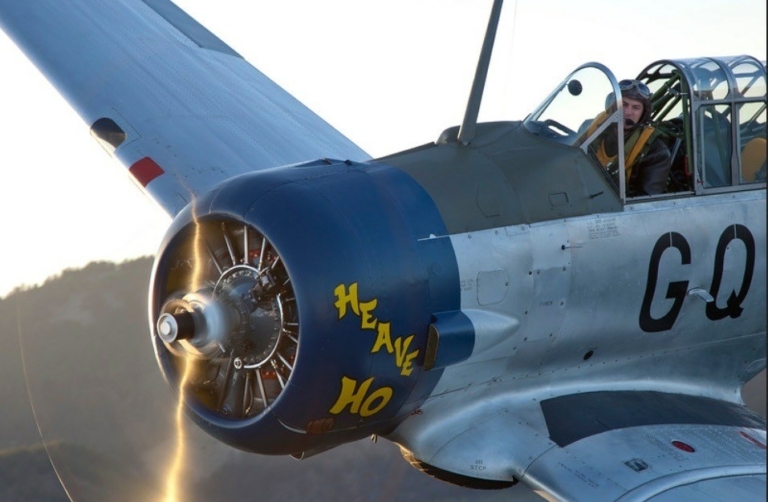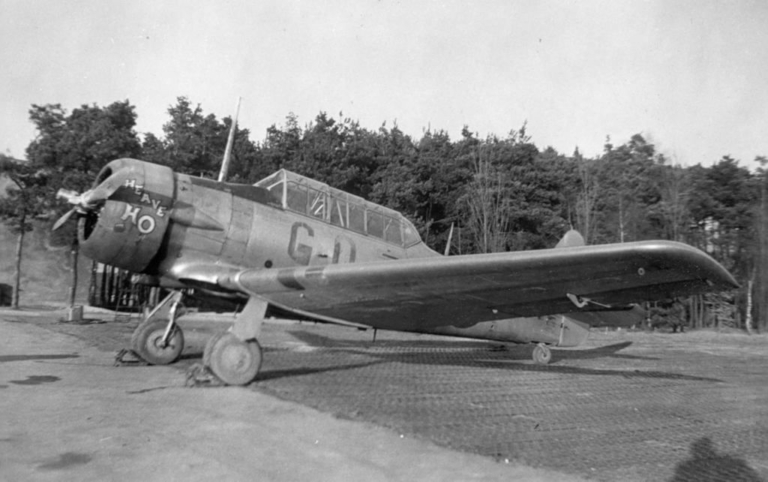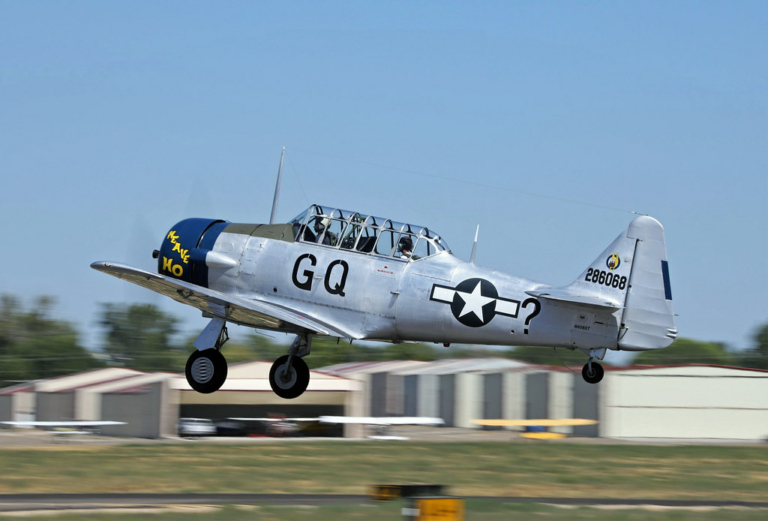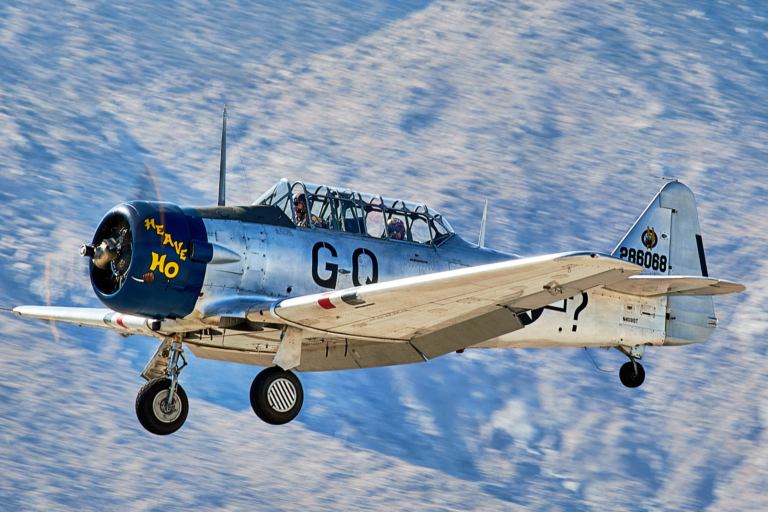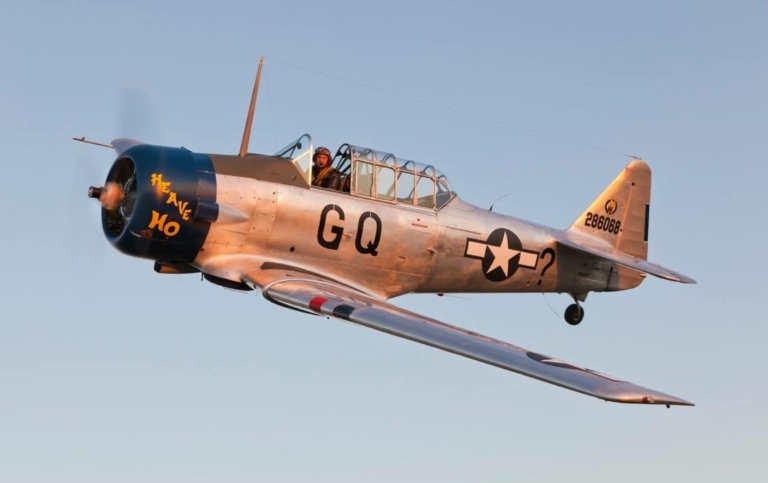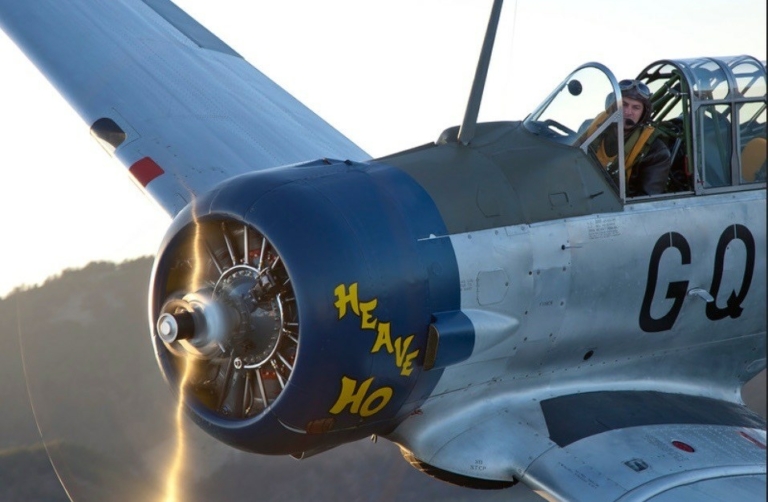T-6 Texan
CHARACTERISTICS
- Crew: 2
- Length: 29 ft
- Wingspan: 42 ft
- Powerplant: 1 × P&W R-1340-AN-1 WASP
- 600 horsepower
- Maximum speed: 208 mph
- Rated cruise speed: 145 mph
- Range: 730 mi
- Service ceiling: 24,200 ft
ARMAMENT
- 2 × .30 caliber (7.62mm) M2 Browning machine guns (AT-6 Variant)
HISTORY
The North American Aviation T-6 Texan two-place advanced trainer was the classroom for most of the Allied pilots who flew in World War II. Called the SNJ by the Navy and the Harvard by the British Royal Air Force, the advanced trainer AT-6 was designed as a transition trainer between basic trainers and first-line tactical aircraft. It was redesignated T-6 in 1948.
In all, the T-6 trained several hundred thousand pilots in 34 different countries over a period of 25 years. A total of 15,495 of the planes were made. Though most famous as a trainer, the T-6 Texan also won honors in World War II and in the early days of the Korean War.
The Texan evolved from the company’s BC-1 basic combat trainer, which was first produced for the U.S. Army Air Corps with fixed landing gear in 1937 under a contract that called for 177 planes. North American designed the NA-49 prototype as a low-cost trainer with many of the characteristics of a high-speed fighter.
Although not as fast as a fighter, it was easy to maintain and repair, had more maneuverability and was easier to handle. A pilot’s airplane, it could roll, Immelmann, loop, spin, snap and vertical roll. It was designed to give the best possible training in all types of tactics, from ground strafing to bombardment and aerial dogfighting. It contained such versatile equipment as bomb racks, blind flying instrumentation, gun and standard cameras, fixed and flexible guns, and just about every other device that military pilots had to operate.
This beautiful T-6D, restored by Pacific Fighters, was a 19-year labor of love. Major restoration work went into rebuilding the outer wing panels including 100% new skins. The paint scheme is authentically replicated from the 354th Fighter Groups Squadron Hack. “Heave Ho” was used by the
354th FG to move people and some supplies back and forth to base in the ETO during World War II.
It was also used to pick up downed pilots. “Heave Ho” was never assigned to any specific pilot, so
the squadron added the question mark instead of a letter, behind the star, because anyone from the
squadron could fly it. It was added the Museum collection in 2021.
BOOK YOUR T-6 RIDE NOW!
~ Do not refresh the page or hit the back button while payment is processing ~

DISCLAIMER/FAQ
- Passengers who cannot board the aircraft without assistance will not fly. You must be capable of climbing and descending the equivalent of a standard ladder.
- The physical restrictions for all planes (other than the C-47) are: 6’5,” and 250 lbs. or smaller.
- All passengers are required to complete a Participant Release.
- For safety, all passengers must wear closed-toe shoes. No sandals or flip-flops will be allowed. Long pants are recommended.
- Large backpacks, shoulder bags, duffel bags, tripods or other bulky items are NOT permitted on the aircraft.
- No animals are permitted on the aircraft.
- NO Firearms, Pepper or Chemical Sprays, Stun Devices or weapons of any kind are permitted on the aircraft.
- Passengers must be 13 years of age or older. Minors who fly (age 13-17) must have their parent or guardian complete a Participant Release for Minors. The parent or guardian must be present for the flight.
- No smoking and no vaping devices are allowed on any of our aircraft.
- No portable oxygen assistance devices are permitted.
- Flights may be canceled due to weather, mechanical, or crew availability.
If you have questions or concerns, please email
[email protected]


